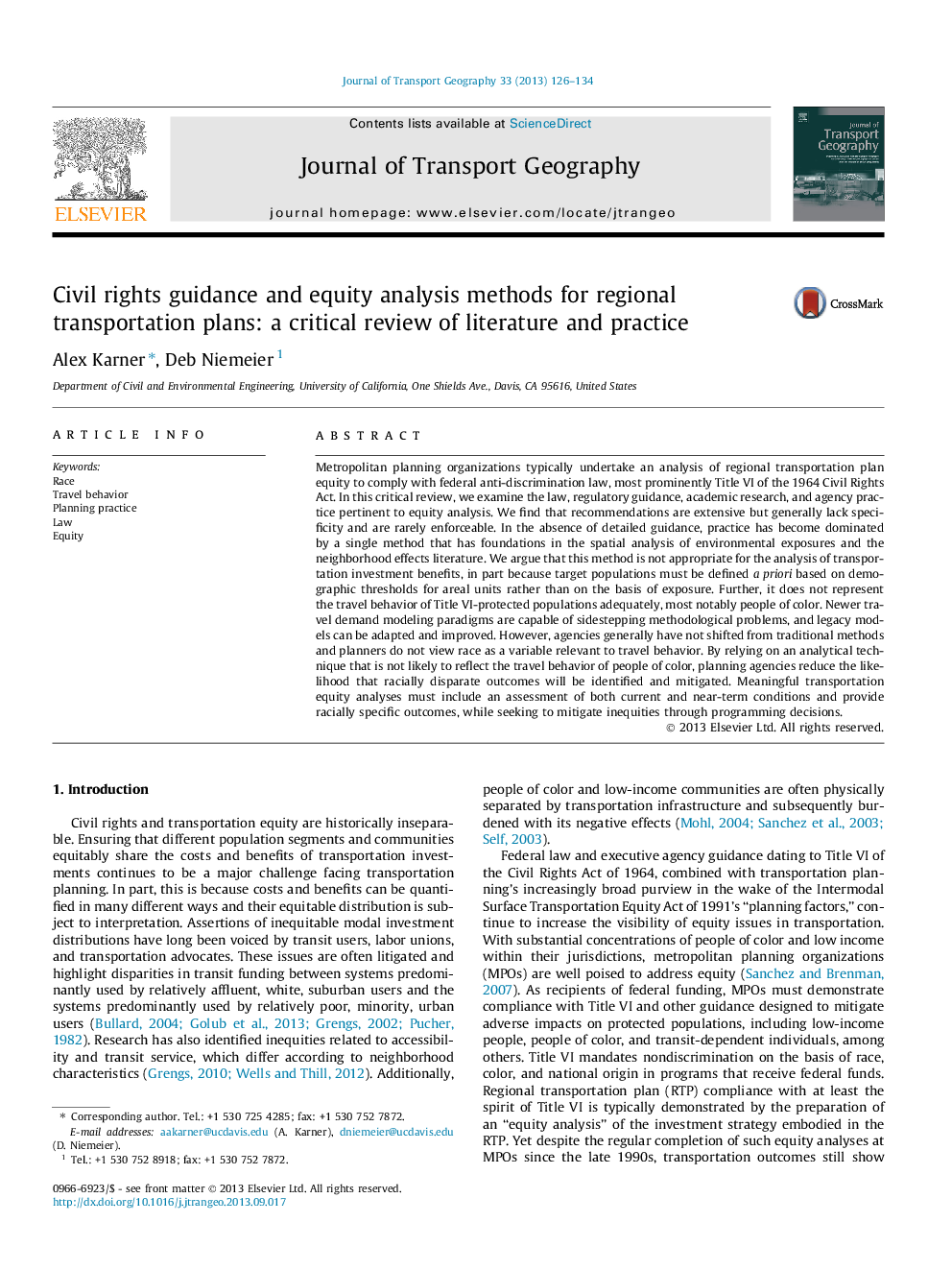| Article ID | Journal | Published Year | Pages | File Type |
|---|---|---|---|---|
| 1059117 | Journal of Transport Geography | 2013 | 9 Pages |
•The law, regulatory guidance, academic research, and agency practice pertinent to equity analysis are reviewed.•Commonly employed methods do not well-represent the travel behavior of disadvantaged populations.•Activity-based models offer a promising path forward, but four step analyses can also be improved.•Understandings of race and travel behavior among planners limit analytical possibilities.•New methods focused on short-term analyses and mitigation are proposed.
Metropolitan planning organizations typically undertake an analysis of regional transportation plan equity to comply with federal anti-discrimination law, most prominently Title VI of the 1964 Civil Rights Act. In this critical review, we examine the law, regulatory guidance, academic research, and agency practice pertinent to equity analysis. We find that recommendations are extensive but generally lack specificity and are rarely enforceable. In the absence of detailed guidance, practice has become dominated by a single method that has foundations in the spatial analysis of environmental exposures and the neighborhood effects literature. We argue that this method is not appropriate for the analysis of transportation investment benefits, in part because target populations must be defined a priori based on demographic thresholds for areal units rather than on the basis of exposure. Further, it does not represent the travel behavior of Title VI-protected populations adequately, most notably people of color. Newer travel demand modeling paradigms are capable of sidestepping methodological problems, and legacy models can be adapted and improved. However, agencies generally have not shifted from traditional methods and planners do not view race as a variable relevant to travel behavior. By relying on an analytical technique that is not likely to reflect the travel behavior of people of color, planning agencies reduce the likelihood that racially disparate outcomes will be identified and mitigated. Meaningful transportation equity analyses must include an assessment of both current and near-term conditions and provide racially specific outcomes, while seeking to mitigate inequities through programming decisions.
